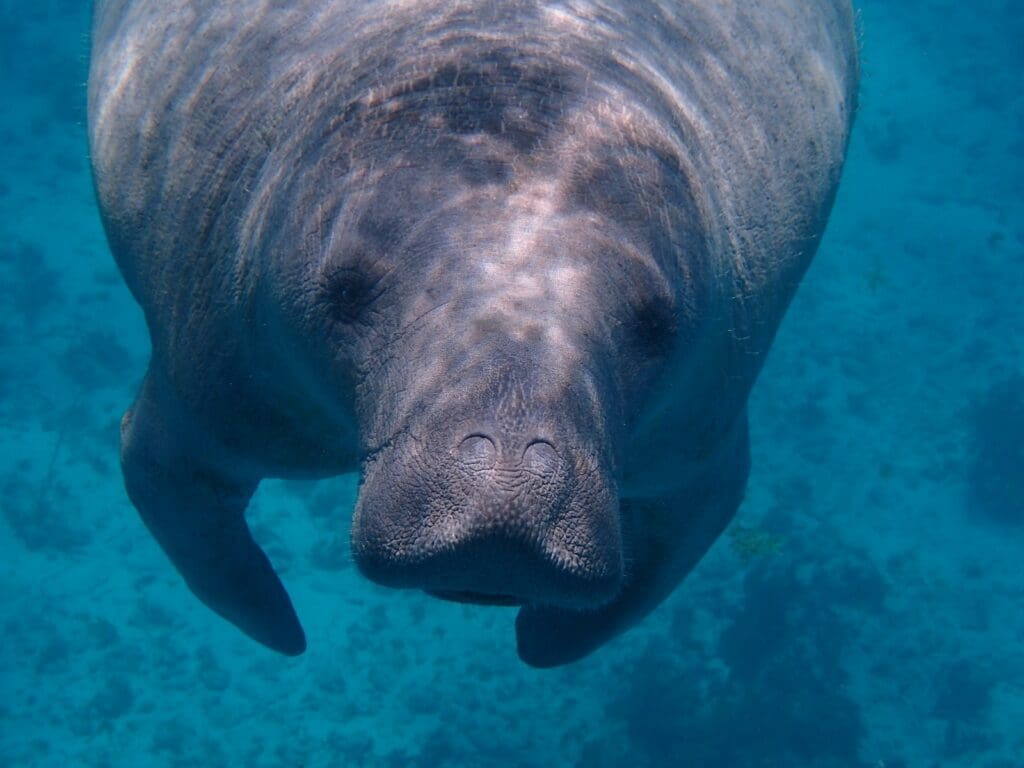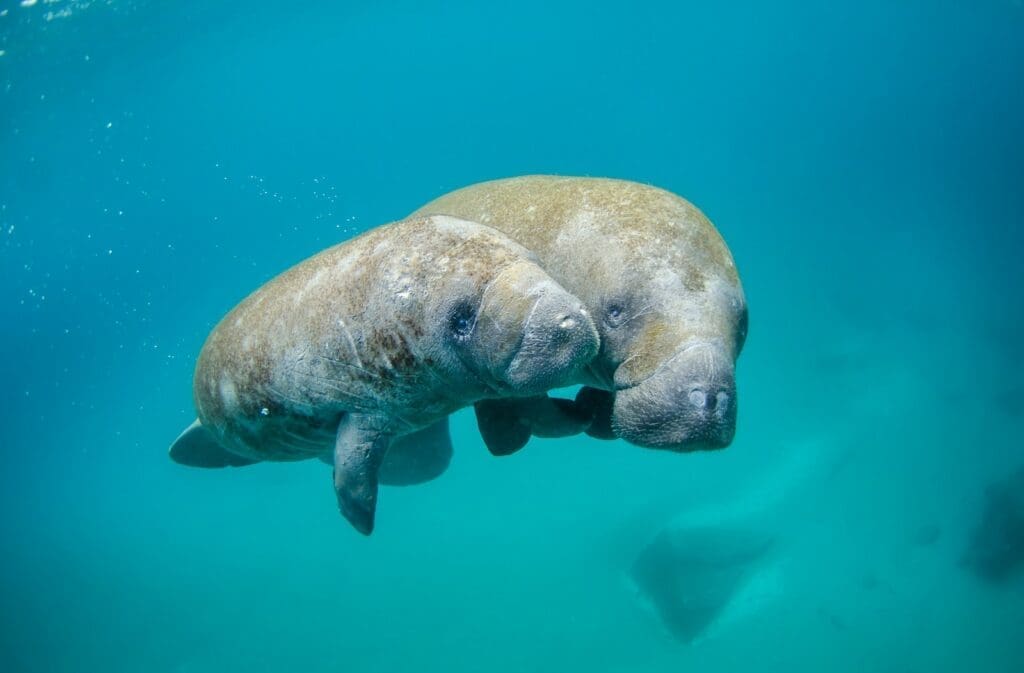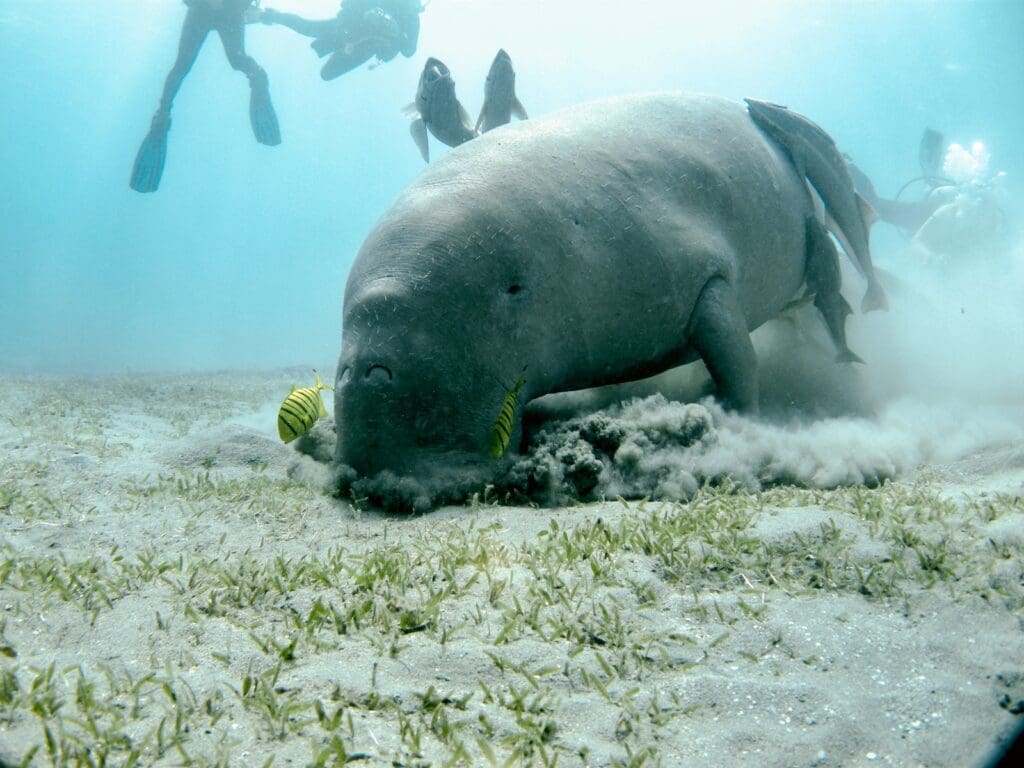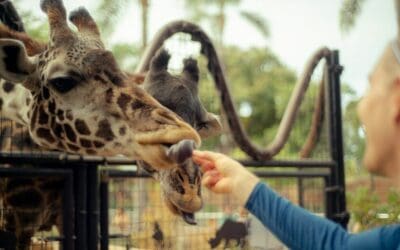
Fun Facts About These Fascinating Creatures
The manatee is a fascinating creature that inhabits the shallow coastal areas and rivers of the Americas. These gentle giants are known for their slow-moving nature and their love for sea grass, mangrove leaves, and algae. In this article, we will explore fun facts about the manatee that will leave you amazed.
Manatee Overview
Manatees are fascinating creatures that belong to the order Sirenia, which includes dugongs and the extinct Steller’s sea cow. They are also known as sea cows due to their docile nature and herbivorous diet. Manatees are large marine mammals that are found in shallow coastal areas and rivers of the Caribbean, Gulf of Mexico, and West Africa.
Manatees are unique in that they are fully aquatic mammals, but they must surface every few minutes to take a breath of air. They are slow-moving and spend up to 50% of their time submerged asleep. Manatees are also known for their gentle nature and have no natural predators in the wild, except for humans who pose a threat due to activities such as boating and fishing.
There are three species of manatees: the West Indian manatee, the Amazonian manatee, and the West African manatee. The West Indian manatee is the most well-known and is found in the Caribbean, Gulf of Mexico, and along the eastern coast of South America. The Amazonian manatee is found in the Amazon River and its tributaries, while the West African manatee is found in coastal areas and rivers of West Africa.
Manatees are herbivores and feed on sea grass, mangrove leaves, and algae. They have a unique digestive system that allows them to extract nutrients from tough vegetation. Despite being sea creatures, manatees closely resemble elephants in their lineage, and their closest living relative is the elephant. Manatees are also considered marine mammals, which means they are endothermic, give birth to live young, and nurse their young.
Physical Characteristics
Size and Weight
Manatees are large, slow-moving aquatic mammals that can grow up to 13 feet long and weigh up to 1,300 pounds. However, the average size is around 10 feet long and 800-1,200 pounds. The West Indian manatee is larger than the Amazonian manatee, with the former being up to 13 feet long and weighing up to 1,300 pounds, while the latter is up to 9 feet long and weighs up to 600 pounds.
Color and Skin
Manatees have a grayish-brown or grayish-black skin that is thick, wrinkled, and tough. Their skin is covered with a sparse hair that is more noticeable in young manatees. Manatees also have scars on their skin, which are caused by boat propellers and other injuries.
Unique Features
Manatees have no teeth in their upper jaw, but they have a set of molars in their lower jaw that are constantly being replaced throughout their life. They also have a prehensile upper lip that they use to grasp and manipulate vegetation. Manatees have a large, paddle-shaped tail that they use to propel themselves through the water. They also have a unique heart structure that allows them to slow down their heart rate when they dive to conserve oxygen.
Vocalizations
Manatees are known for their vocalizations, which include chirps, whistles, and grunts. They use these sounds to communicate with each other and to locate other manatees. Manatees also make a distinctive sound when they surface to breathe, which is often described as a “popping” or “snorting” sound.

Habitat and Distribution
Habitat Types
Manatees are aquatic mammals that prefer shallow waters with a depth of 1-3 meters. They can be found in various habitats such as rivers, estuaries, saltwater bays, and coastal areas. Manatees are herbivores and feed on sea grass, mangrove leaves, and algae. They spend most of their time grazing and can eat up to 10% of their body weight each day. Manatees can hold their breath for up to 20 minutes and can slow down their heartbeat to conserve oxygen.
Geographical Distribution
There are three species of manatees: the West Indian manatee, the Amazonian manatee, and the African manatee. The West Indian manatee is found in the warm waters of the Caribbean, Gulf of Mexico, and Florida. The Amazonian manatee is found in the freshwater rivers of the Amazon Basin. The African manatee is found along the west coast and rivers of Africa.
Florida is home to the largest population of manatees in the world. During the winter months, manatees migrate to warmer waters and can be found in areas such as the Crystal River and Blue Spring State Park. In South America, manatees can be found in the Amazon River and its tributaries. In Africa, manatees can be found in coastal waters and rivers such as the Niger River.
Unfortunately, manatees are considered a vulnerable species due to habitat loss, boat strikes, and pollution. Conservation efforts are in place to protect these gentle giants and their habitats.
Diet
Manatees are herbivores, meaning they only consume plant material. They feed on a variety of vegetation, including seagrasses, saltwater plants, and freshwater vegetation. In Florida, manatees feed on over 60 species of plants, with turtle grass, manatee grass, and shoal grass being their preferred choices.
Manatees are grazers and spend most of their time eating. They consume up to 10% of their body weight in plants every day. For an average-sized manatee, that would be around 100 pounds of greenery per day. They use their flippers to grasp and pull vegetation towards their mouths.
Manatees have a unique digestive system that allows them to break down tough plant material. They have multiple stomach chambers that help break down the fibrous material and extract nutrients. They also have a slow metabolism, which allows them to survive on a low-calorie diet.
In addition to seagrasses and saltwater plants, manatees also eat various types of algae. They use their sensitive upper lips to detect and grasp the algae. Algae is an essential part of their diet, as it provides vital nutrients and minerals that are not found in seagrasses.
Behavior
Manatees are known for their gentle and slow-moving behavior. They are social animals and can often be found in groups of two or more. Manatees are also known to vocalize, using a series of chirps, whistles, and squeaks to communicate with each other.
When it comes to air, manatees are mammals and need to breathe air to survive. They can hold their breath for up to 20 minutes, but typically surface every three to five minutes to breathe. When sleeping, manatees will often float near the surface of the water, taking a breath every few minutes.
While manatees may not be known for their playful behavior, they have been observed engaging in basic tasks such as rubbing their bodies against objects in the water. They are also known to be sensitive to touch, with certain areas of their bodies being more sensitive than others.
Species and Relatives
Manatee Species
There are three species of manatees: the West Indian manatee, the Amazonian manatee, and the African manatee. The West Indian manatee is further divided into two subspecies: the Florida manatee and the Antillean manatee.
The West Indian manatee is the most well-known and widely distributed of the three species, found in the coastal waters, rivers, and estuaries of the Caribbean Sea, Gulf of Mexico, and Atlantic Ocean. The Florida manatee is a subspecies of the West Indian manatee and is found primarily in the southeastern United States. The Antillean manatee, another subspecies of the West Indian manatee, is found in the Caribbean Sea and its surrounding waters.
The Amazonian manatee is found in the freshwater rivers and lakes of the Amazon Basin in South America. It is the smallest of the three species and has a unique prehensile upper lip that it uses to grasp and manipulate food.
The African manatee is the least studied of the three species and is found in the coastal waters and rivers of West and Central Africa. It is the only species of manatee found in the Old World.
Related Species
Manatees are part of the order Sirenia, which also includes the dugong. Dugongs are similar to manatees in appearance and behavior but have a more streamlined body and a dolphin-like tail.
Manatees and dugongs are both believed to have evolved from a common land animal ancestor that lived over 50 million years ago. They are the only herbivorous marine mammals and are closely related to elephants and hyraxes.
Another member of the Sirenia order was the Steller’s sea cow, which was hunted to extinction in the 18th century. It was much larger than the manatee and dugong and is believed to have been more closely related to whales than to other members of the Sirenia order.
Reproduction
Manatees are known for their slow reproductive rate. Female manatees reach sexual maturity between three and five years of age, while males mature at around five years of age. Once a female manatee becomes pregnant, the gestation period lasts for approximately 12 months. The calf is born underwater and weighs around 70 pounds, measuring approximately six feet in length.
Manatee calves are born with a full set of teeth and are able to swim immediately. They are also able to nurse from their mother’s nipples, which are located behind her flippers. Manatee mothers nurse their young for up to two years, during which time the calf remains close to its mother.
Manatees reproduce slowly, with females giving birth to one calf every two to five years. This slow reproductive rate, combined with habitat loss and other threats, makes manatees vulnerable to extinction. Conservation efforts are underway to protect manatee populations and their habitats, including measures to reduce boat strikes and prevent accidental entanglement in fishing gear.

Threats and Conservation
Threats
The manatee is a gentle giant that is threatened by several factors. One of the biggest threats to this marine mammal is boat collisions. As manatees are slow swimmers, they are often hit by boats, which can cause serious injuries and even death. Another threat to manatees is predators, such as alligators and sharks.
Red tide is a harmful algal bloom that can also pose a threat to manatees. When manatees ingest the toxic algae, it can cause respiratory distress and even death. Pollution, habitat loss, and climate change are also contributing factors to the decline of manatee populations.
Conservation Efforts
Several efforts have been put in place to protect the manatee from these threats. The Marine Mammal Protection Act and the Endangered Species Act provide legal protection for manatees. The U.S. Fish and Wildlife Service and Save the Manatee Club are organizations that work to protect and conserve manatees and their habitats.
To reduce the number of boat collisions, speed zones have been established in areas where manatees are known to frequent. These speed zones help to reduce the number of injuries and fatalities caused by boat collisions. Manatee rehabilitation centers have also been established to care for injured or sick manatees.
In addition, efforts to reduce pollution and preserve manatee habitats are ongoing. These efforts include the restoration of seagrass beds, the reduction of nutrient pollution, and the establishment of manatee sanctuaries. Through these conservation efforts, it is hoped that manatee populations will continue to recover and thrive.
Manatees and Humans
Historical Significance
Manatees have played a significant role in human culture for centuries. In ancient Greek mythology, they were believed to be sirens, beautiful creatures that lured sailors to their deaths with their enchanting songs. Similarly, in West African mythology, manatees were considered to be mermaids, half-human and half-fish creatures that were said to have healing powers.
Christopher Columbus himself encountered manatees during his voyages to the Americas, mistaking them for mermaids due to their human-like faces. Sailors in the past also hunted manatees for their meat and hides, leading to their decline in certain areas.
Current Interaction
Today, humans have a more positive relationship with manatees. Manatee awareness month is celebrated every November to educate people about the importance of protecting these gentle giants. Power plants have also become important habitats for manatees during the winter months, as they provide warm water that the animals seek out.
In the Caribbean, the word for manatee, “lamantin,” is derived from the Carib word for breast, as the manatee’s teats are located near its armpits, leading to the belief that they were a symbol of feminine nourishment. However, in some cultures, manatees are also associated with masculinity due to their size and strength.
Overall, manatees continue to fascinate and captivate humans with their unique appearance and behavior. As more people become aware of their importance to the ecosystem, efforts to protect and conserve them will hopefully continue to grow.




